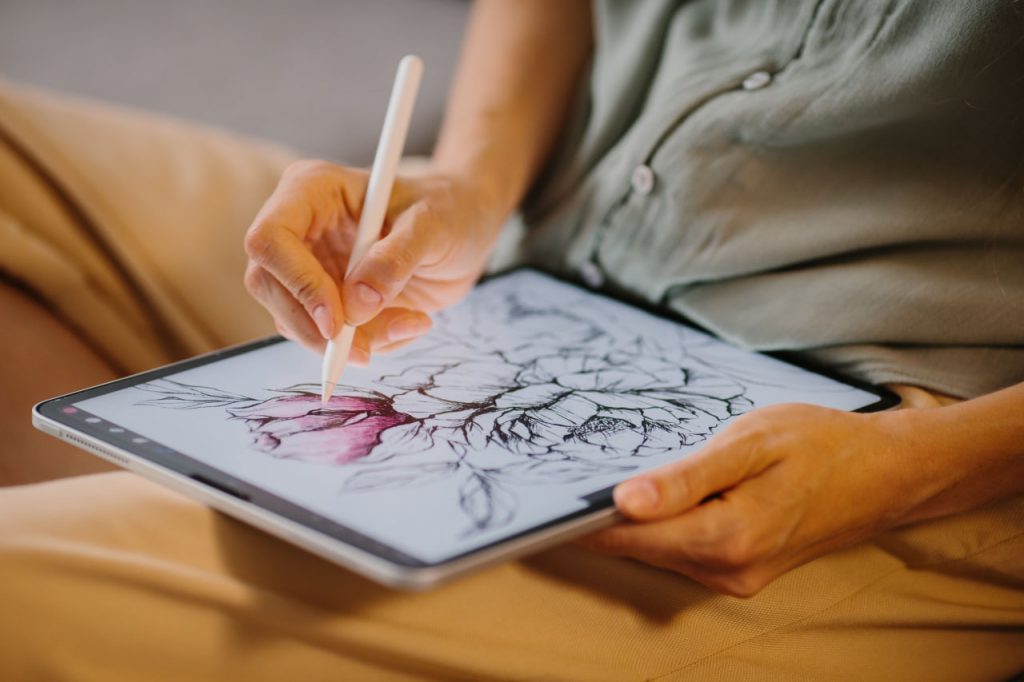Introduction: A strong digital art portfolio is crucial for any artist, whether you’re looking to land freelance projects, apply for art schools, or attract clients. It’s your opportunity to showcase your skills, style, and versatility. But how do you go about creating an impressive portfolio that stands out in a crowded industry? In this article, we’ll guide you through the steps to build a digital art portfolio that highlights your best work and gets you noticed by potential clients and employers.
1. Curate Your Best Work
Quality Over Quantity: When building your portfolio, it’s important to focus on quality rather than quantity. A smaller collection of well-crafted pieces will always be more effective than a large portfolio of mediocre artwork. Choose only your strongest pieces—those that demonstrate your technical skills, creativity, and versatility.
Tailor Your Portfolio: While it’s essential to showcase a range of work, consider tailoring your portfolio to the audience you’re targeting. For example, if you’re applying for a job as a concept artist, make sure your portfolio features concept art, character designs, and environment illustrations. If you’re looking for freelance illustration work, include a variety of illustrations and commissions that showcase your style and adaptability.
2. Show Your Process
Behind-the-Scenes Insight: Potential clients and employers love to see how an artist develops their work. Including process images, sketches, and work-in-progress shots in your portfolio can give them insight into your creative journey. This not only shows your technical proficiency but also demonstrates your ability to problem-solve and think critically about your work.
Step-by-Step Breakdown: Consider adding captions or short explanations to your process images to walk viewers through your approach. This helps them understand your workflow and gives them a better idea of how you tackle different aspects of a project.
3. Organize Your Portfolio
Create Clear Categories: A cluttered portfolio can be confusing and difficult to navigate. Organize your work into categories or themes, such as “Character Design,” “Environment Concept Art,” or “Freelance Illustrations.” This will make it easier for viewers to find the type of work they’re looking for.
Easy Navigation: Ensure that your portfolio is easy to navigate. A simple, clean layout with intuitive navigation is essential. Include categories, filters, or even a search function to allow users to quickly find specific pieces.
4. Keep It Updated
Show New Work: Your portfolio is a reflection of your current skills and style. As you improve and grow as an artist, it’s important to keep your portfolio up-to-date. Regularly replace older pieces with newer ones to reflect your evolving skill set.
Remove Outdated Work: If you have work in your portfolio that no longer represents your best abilities or doesn’t match your current style, remove it. A portfolio should reflect where you are now, not where you were months or years ago.
5. Provide Contact Information and a Bio
Introduce Yourself: Include a short bio in your portfolio that introduces you to potential clients or employers. This is your chance to share your background, artistic influences, and why you’re passionate about digital art. Keep it concise and professional.
Make It Easy to Contact You: Make sure your contact information is easy to find. Include an email address or a contact form so potential clients or collaborators can easily reach out to you. Consider linking to your social media profiles or LinkedIn as well to help you expand your network.
6. Create an Online Presence
Build Your Website: While you can use platforms like Behance or ArtStation to showcase your work, having your own website gives you more control over the design and presentation of your portfolio. A website also allows you to add a blog, an online shop, or other features to enhance your professional presence.
Leverage Social Media: Social media platforms like Instagram, Twitter, and TikTok are excellent tools for building your audience and sharing your art. Use these platforms to showcase snippets of your portfolio, behind-the-scenes work, and progress shots to engage with your audience.
Conclusion:
Building a strong digital art portfolio takes time, effort, and careful curation, but it’s one of the most important steps in establishing yourself as a professional artist. By showcasing your best work, demonstrating your creative process, and keeping your portfolio up-to-date, you’ll increase your chances of landing freelance gigs, art jobs, or clients. Remember, your portfolio is your artistic resume, so make it reflect your talent and passion for art!

